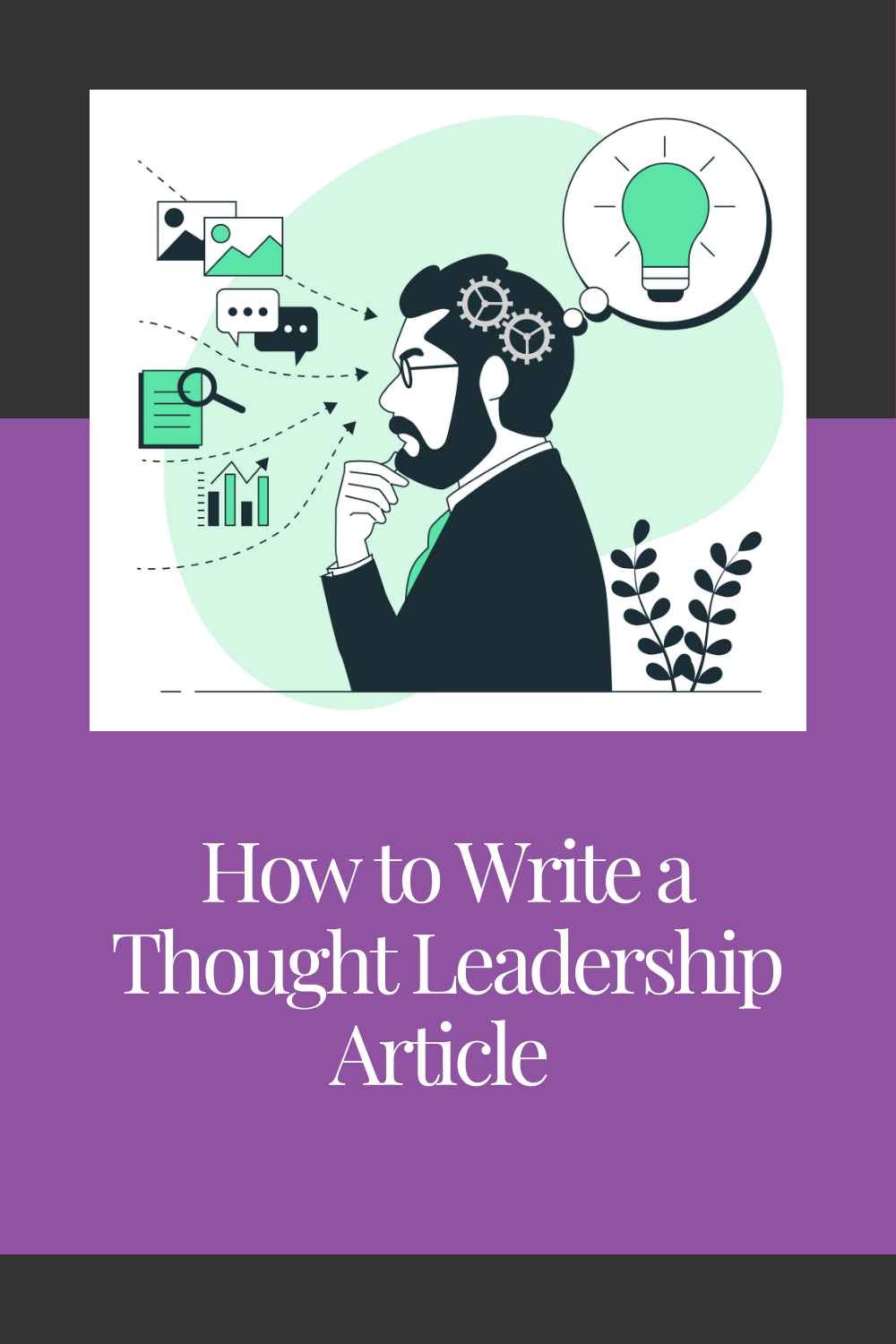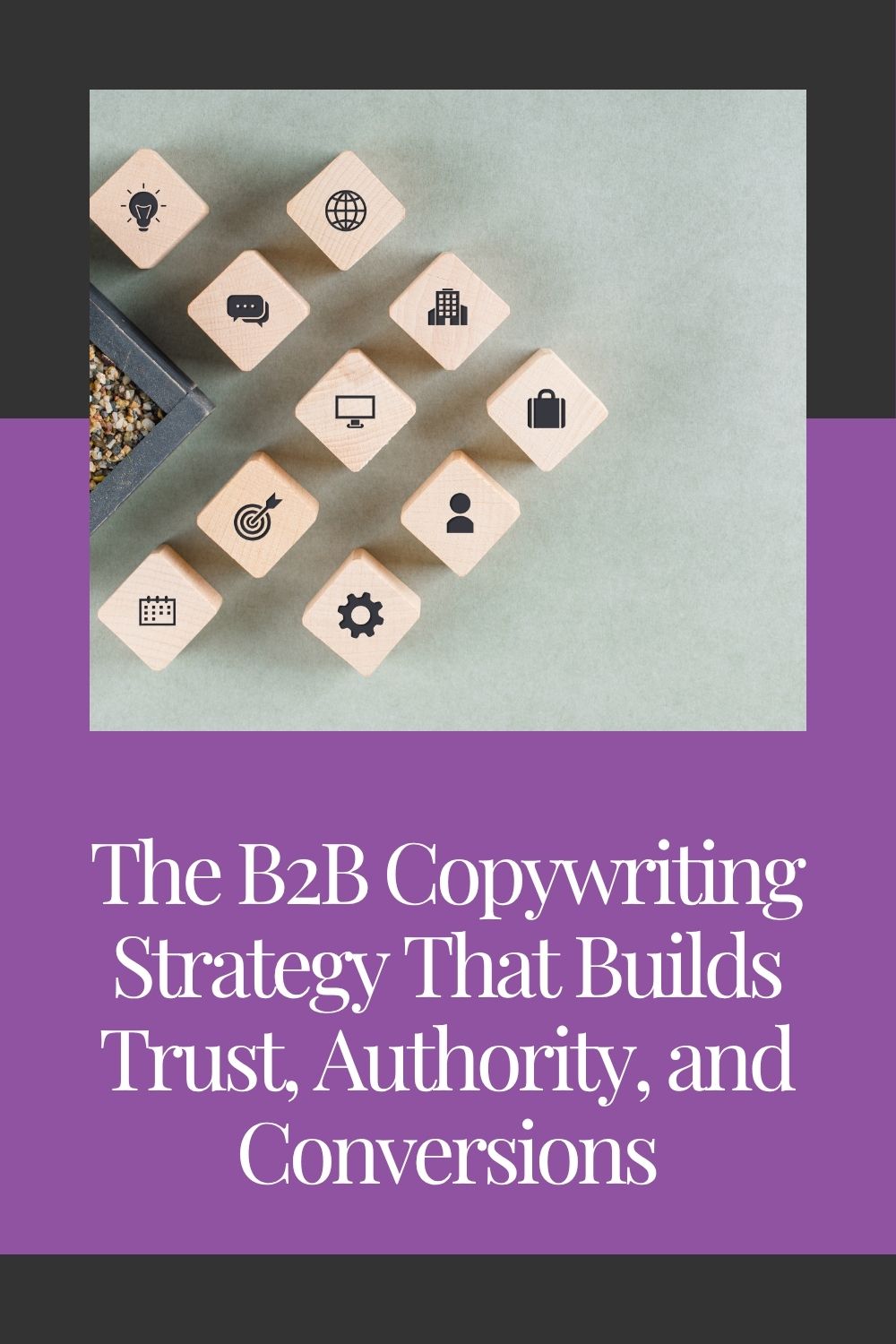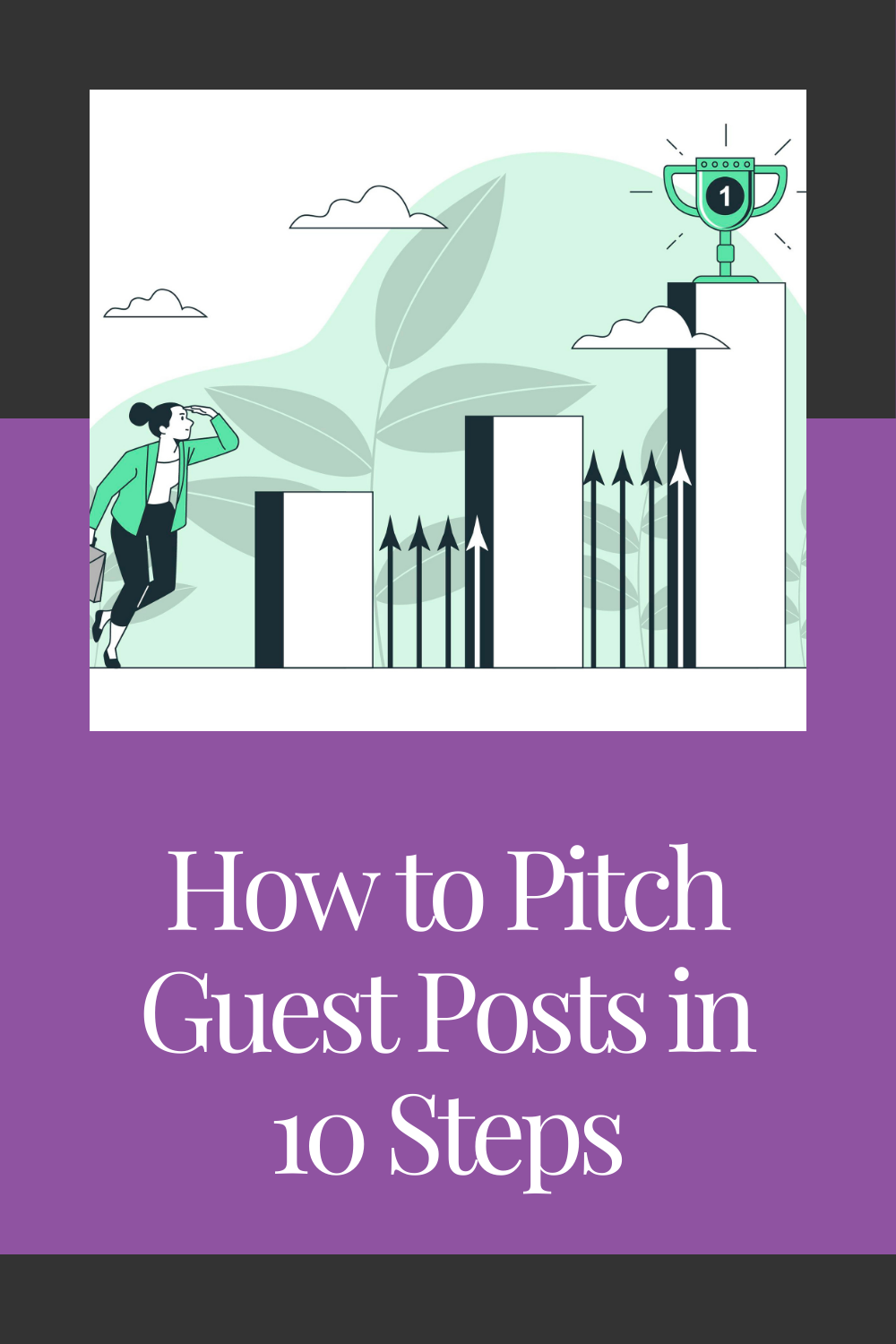How to Write a Thought Leadership Article That Builds Authority & Trust
Most thought leadership articles fall flat because they play it safe and repeat common advice, dropping buzzwords, and pretending bold headlines equal authority. They don’t. Real thought leadership means saying something that matters, backed by experience, and written with clarity and purpose. In this guide, I’ll walk you through how to write a thought leadership article that builds trust, authority, and engagement. Step by step, with real examples. This is how you make sure people actually listen.

Some articles claim to be thought leadership because they have a bold headline, a few industry buzzwords, and an obligatory “ever-evolving” GPT opener. But when you dig in, they don’t say anything new. They repeat the same advice, offer surface-level insights, and add to the content clutter we already have piling up at our doors.
If your biggest insight is “In today’s digital world, businesses must innovate,” you’re not leading any thoughts.
I’ve spent years writing for B2B brands, SaaS companies, and industry leaders. I’ve seen what works, what gets ignored, and what actually builds authority. Thought leadership sounds like using big words or summarizing what others have already said as your ticket into the big league.
In reality: It’s about having something valuable to say and knowing how to say it.
A strong thought leadership article sparks conversations and positions you as an expert. It provides value, encourages engagement, and stays relevant long after it’s published.
Writing an article like this takes time, experience, and strategy. This guide will walk you through the steps to creating content that informs, influences, and establishes authority.
Step 1: Identify Your Unique Perspective
Thought leadership is called this because you’re meant to lead with your thoughts and not regurgitate what others already said. The point is to offer a fresh, experience-based perspective and add something new.
That could mean challenging an industry norm, breaking down a complex idea in a way no one else has, or sharing real experiences that others can learn from.
If you’re struggling to find your angle, ask yourself:
What do I strongly believe that others in my industry overlook or get wrong?
What mistakes have I made (or seen others make) that no one talks about?
What insights do I have that come from real experience, not theory?
A strong thought leadership article begins with a clear point of view that only you can bring.
Example: "Ideas and Originality Are Overrated—Just Ask Titian or Michelangelo" by Nell Frizzell
In this insightful article, journalist and author Nell Frizzell challenges the conventional obsession with originality in creative endeavors. Drawing from personal experiences and historical examples, Frizzell argues that the relentless pursuit of novel ideas can be counterproductive, suggesting that focusing on one's strengths and refining existing concepts can lead to authentic and impactful work.
Why it stands out:
- Contrarian viewpoint: Frizzell dismisses the traditional emphasis on originality, proposing that embracing and reinterpreting existing ideas can be more fruitful than striving for unprecedented innovation.
- Relatable anecdotes: By sharing her own journey and struggles with originality, Frizzell connects with readers on a personal level, making the narrative both engaging and accessible.
- Historical context: Referencing renowned artists like Titian and Michelangelo, who honed their craft through apprenticeship and imitation, adds depth and credibility to her argument.
This is a great example of how to challenge conventional wisdom and spark discussion, even if we’d argue that real thought leadership comes from reshaping ideas, not recycling them. You can create value even if you disagree with most.
So, take inspiration, but don’t just repackage old advice. Add your own insight, your own data, and your own fresh angle.
Step 2: Research What Your Audience Cares About
A true thought leader doesn’t write for the sake of writing (they have better things to do). They solve real problems that people care about. If your content doesn’t answer a burning question, challenge a misconception, or provide insights people actually need, it won’t stick.
So, before writing, ask:
- What are people in my industry struggling with right now?
- What conversations are happening that lack a clear answer?
- What questions do I hear over and over again?
The good thing is that you don’t have to guess. You can find out what matters to your audience.
Go Where the Conversations Are
LinkedIn & Twitter → Follow industry discussions. What are people ranting about? What posts get the most engagement?
Reddit & industry forums → Look for recurring questions. If people keep asking the same thing, they need a better answer.
Quora & Google’s “People Also Ask” → Search your topic and see what related questions pop up.
Use Data, Not Just Gut Feelings
Google trends → Find out if your topic is gaining interest or fading.
SEO tools (Ahrefs, SEMrush, AnswerThePublic) → See what people are actively searching for.
Customer surveys & interviews → If you have direct access to your audience, ask them what they want to know.
Example:
Let’s say everyone in your industry is writing about “The Future of AI in Marketing.” Instead of adding another generic take, go deeper:
❌ “How AI Is Changing Marketing” → Too broad, already covered.
✅ “Why AI Copywriting Sounds Good But Doesn't Sell - And What Smart Brands Are Doing Instead”
A strong, focused opinion that sparks debate.
Thought leadership should be finding a way to add your fresh perspective to the mix and be the person who steps up to lead like-minded people.

Step 3: Structure Your Thought Leadership Article for Maximum Impact
Thought leaders are not writers per se. Some have amazing insights but lack the structure to keep readers engaged, build credibility, and deliver real value.
It’s one thing to be passionate about a topic and have a ton of experience, and it’s quite another to relay your message and get to people.
Here’s how to structure a thought leadership piece effectively:
# 1. Hook: Grab Attention Immediately
A strong opening makes people want to keep reading. Start with:
- A bold statement that challenges assumptions
- A thought-provoking question
- A surprising statistic
- A compelling industry trend
Example: Instead of “AI is changing content marketing,” open with “More than 80% of businesses plan to use AI for content creation next year, but most will struggle to see results.”
# 2. Personal Experience or Data: Establish Credibility
Thought leaders don’t repeat what others say. Readers want to hear from someone with real insights.
Strengthen your argument with:
- A personal story that connects to the topic
- Data or case studies that support your point
- Lessons learned from real-world experience
Example: Instead of “AI-generated copy lacks persuasion,” share a case study of a company that tested AI-generated sales pages and saw lower conversion rates.
# 3. Actionable Takeaways: Give Readers Something Useful
Good thought leadership articles analyze a problem, and they tell the reader what to do differently.
- Offer clear, specific advice
- Provide a step-by-step approach
- Give examples of brands or professionals who applied these ideas successfully
Example: Instead of saying, “Marketers need to be strategic with AI,” break it down into actionable steps like “Use AI for research and ideation, but let human writers craft final sales copy.”
# 4. Conclusion: Reinforce the Key Idea and Call to Action
End with a clear takeaway that reinforces your argument. Avoid vague conclusions like “AI is here to stay” or “Businesses need to adapt.” Instead:
- Summarize the key lesson in one or two sentences
- Encourage readers to rethink their current approach
- Include a call to action, like asking a question or inviting a discussion
Example: Instead of “AI will continue evolving,” close with “Brands that combine AI efficiency with human creativity will build stronger, more persuasive content strategies.”

Why Storytelling Makes Thought Leadership More Engaging
Facts and data build credibility, but stories create connections. The best thought leadership pieces use storytelling to:
✔ Show rather than tell
✔ Make ideas easier to remember
✔ Create an emotional impact
Readers have enough random information. They want insights delivered in a way that keeps them engaged. A well-structured article does both.
Step 4: Support Your Arguments with Data & Examples
"Great leaders don’t raise their voices; they improve their arguments."
You don’t have to be the loudest; you just need credibility supported by evidence. The strongest articles don’t claim something is true but rather back it up with data, case studies, and real-world examples.
People are skeptical (with a good reason). If your article is built on assumptions without proof, readers will move on. Data gives your content weight, helping you:
✔ Strengthen your credibility
✔ Differentiate yourself from generic thought pieces
✔ Make your insights more persuasive
Without data, your argument is just another opinion.
Where to Find Credible Data, Research, and Case Studies
Backing up your insights doesn’t mean stuffing your article with random stats. The best data is:
Relevant—directly supports your argument
Recent—outdated numbers won’t add value
From trusted sources—think industry reports, academic studies, and first-hand case studies
Here’s where to look:
- Google Scholar & industry reports (Harvard Business Review, Gartner, McKinsey, Forrester)
- Surveys & case studies (HubSpot, Content Marketing Institute, Edelman Trust Barometer)
- SEO & marketing tools (Ahrefs, SEMrush, Moz, Google Trends)
- Your own data (If you’ve done experiments or have customer insights, use them)
Example: "Why Millennials Keep Dumping You: An Open Letter to Management" by Elizabeth Lotardo
In this compelling piece, Elizabeth Lotardo addresses the high turnover rates among millennial employees, providing a candid perspective on management practices. The article resonated deeply with professionals who felt unheard and undervalued, leading to widespread sharing and discussions.
Why it went viral:
- Authentic voice: Lotardo's genuine and heartfelt writing struck a chord with readers, making the content relatable and shareable.
- Addressing a common issue: The article tackled a prevalent problem—millennial turnover—offering insights that many found valuable.
- A catalyst for dialogue: By openly discussing workplace challenges, the piece encouraged conversations about improving corporate culture and management strategies.
This example shows us how addressing real-world issues with authenticity and backed by relatable experiences can elevate thought leadership content, making it both impactful and widely disseminated.
Step 5: Optimize for SEO Without Sounding Robotic
SEO matters, but forcing keywords into a thought leadership article makes it unreadable. The best SEO-optimized content doesn’t feel like it was written for an algorithm; it feels like it was written for people.
Here’s how to rank without sacrificing quality.
Naturally Incorporate Keywords Without Overstuffing
Keyword stuffing is outdated. Instead of forcing the exact phrase “how to write a thought leadership article” into every sentence, use variations and contextual relevance.
Good:
- “When writing thought leadership content…”
- “A strong thought leadership article needs…”
- “Experts who share original insights gain more credibility.”
Bad:
- “A thought leadership article is how to write a thought leadership article.”
Google understands synonyms, intent, and natural language. Use keywords strategically, not excessively.
Where to Place Keywords for Maximum Impact
If your article is valuable, Google will reward it, but placement matters.
Title & meta description: Use the primary keyword early.
Headers (H1, H2, H3): Google scans headings to understand content structure. Make them clear, keyword-relevant, and engaging.
First 100 Words: Search engines weigh early content more heavily. Introduce your main topic naturally.
Image alt text: Google can’t “see” images, but it reads alt text.
URL slug: Keep it short and descriptive.
✅ copywise.ink/write-thought-leadership-article
❌ copywise.ink/how-to-write-a-thought-leadership-article-in-2025-best-guide
Google Rewards Expert-Driven Content (E-E-A-T)
Google prioritizes content that demonstrates:
Experience → Have you personally done what you’re writing about?
Expertise → Do you know this subject well?
Authority → Are others referencing your content?
Trustworthiness → Is your information reliable?
Don’t think of SEO as tricking Google. It’s about structuring content so it’s easy to read, valuable to the audience, and naturally discoverable.
Step 6: Promote Your Thought Leadership Article the Right Way
Writing a great thought leadership article is only half the battle.
If nobody reads it, you won’t establish authority, spark discussions, or drive engagement. The right promotion strategy puts your insights in front of the right audience and keeps the conversation going.
Use LinkedIn to Get Your Article Seen
LinkedIn is the perfect place for thought leadership, but dropping a link and hoping for clicks isn’t enough. Instead:
Summarize the article in a post → Instead of just pasting the link, write a short, engaging summary that highlights the most compelling point.
Ask a question → End with something that invites discussion, like “What’s the biggest challenge you’ve faced when writing thought leadership content?”
Tag relevant industry leaders → If your article references an expert or a trend, tag people who might be interested in the discussion (but don't be creepy).
Get Published on Industry Sites and Guest Blogs
Your website isn’t the only place where thought leadership can live. Getting your article published on high-authority industry websites increases visibility, credibility, and backlinks for SEO.
Here are a couple of things you should try:
Find relevant publications → Look for websites that publish expert content in your niche. Examples include Content Marketing Institute, HubSpot, and Forbes.
Pitch the right way → Don’t just ask to publish your article. Pitch why their audience would benefit from it.
Write guest posts that complement your main article → If your article is about thought leadership content, pitch a guest post like "5 Common Mistakes in Thought Leadership Writing" that links back to the original.
Use Newsletters to Reach a Loyal Audience
If you have an email list, send your article to people who already trust your insights.
Write a compelling subject line → Example: “The #1 Mistake in Thought Leadership Writing (Are You Making It?)”
Keep it short and focused → Highlight one key insight, then link to the full article.
Make it skimmable → Use bullet points or short paragraphs so readers quickly see the value.
Create Twitter/X threads → Break down the key takeaways into a 5-7 tweet thread.
Turn it into a LinkedIn article → Some people prefer reading directly on the platform instead of clicking away.
Make a short-form video → A 60-second summary of your main points can grab attention on LinkedIn or YouTube Shorts.
Writing Thought Leadership That Positions You as an Expert
A strong thought leadership article influences, engages, and builds credibility. If you want to stand out, you need more than well-written content.
You need a strategy.
Here’s what we covered:
✔ Find a unique perspective → Thought leadership isn’t repeating what’s already been said. Challenge assumptions, share real insights, and bring a fresh angle.
✔ Write for your audience → Solve real problems, answer pressing questions, and focus on what your industry cares about.
✔ Structure for impact → Grab attention with a strong hook, back up claims with data, and make it easy to read and take action on.
✔ Support your claims with data → Opinions don’t make you a leader. Well-researched, experience-backed insights do.
✔ Optimize for SEO without sacrificing quality → Use keywords naturally, focus on clarity, and let search rankings follow strong content.
✔ Promote it the right way → Writing is half the battle. Distribute your content on LinkedIn, guest blogs, newsletters, and industry platforms to maximize reach and engagement.
If you want content that builds authority and sparks conversations, you don't have to do it alone or learn all the tricks of the trade. Instead, let’s talk. I help brands create high-impact content that gets noticed.
Turn Words into Revenue — Work With Us!
We’re Ready to Elevate Your Brand


